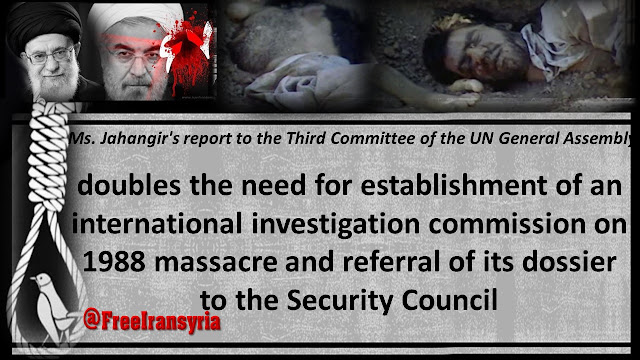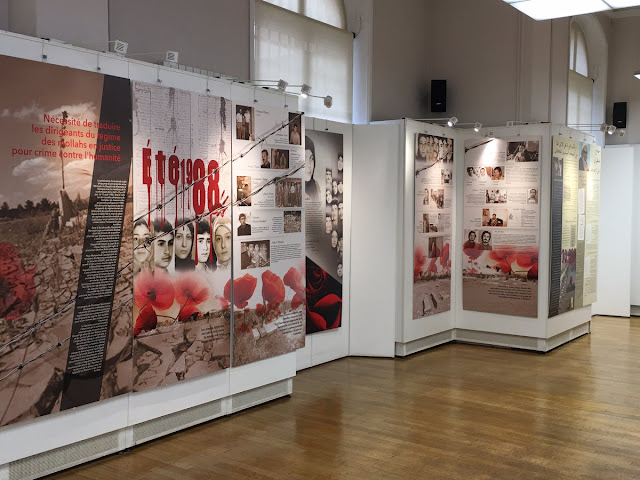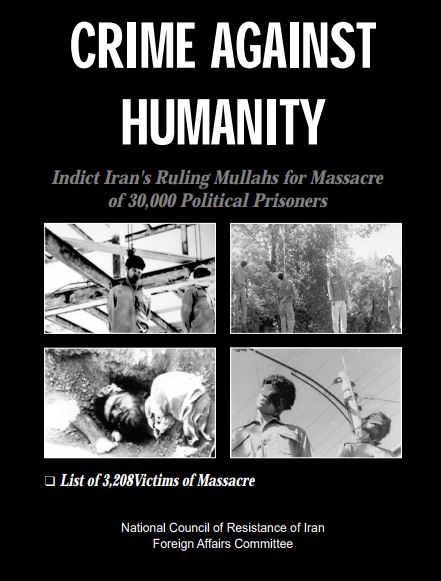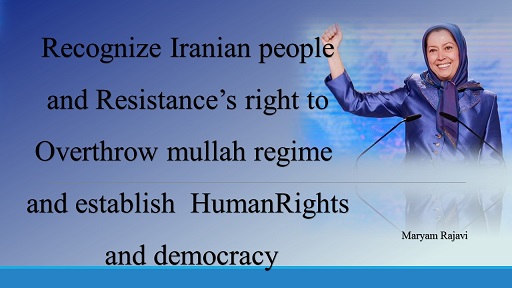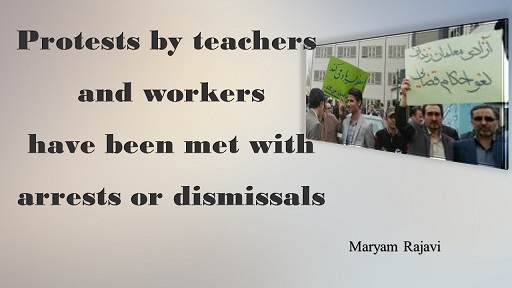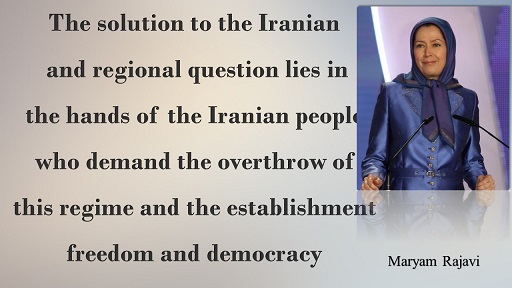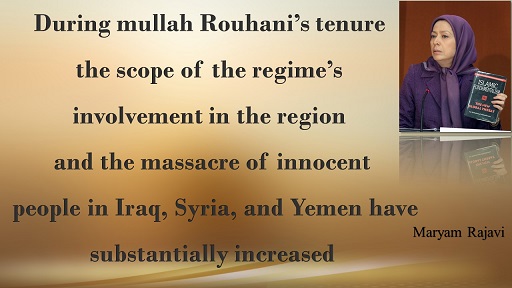In this section you will find relevant documents and reports related to the human rights situation in Iran, with special focus on the 1988 massacre.
Bring to justice the masterminds and perpetrators of the 1988 massacre of 30,000 political prisoners in Iran
Please singe the petition
click here
Time for Reckoning a Long Hidden Massacre
This week, Tehran announced it would continue a missile development program that defense analysts say could allow Iran to launch nuclear weapons. It was a public threat that has understandably stirred strong response from the U.S. and the west: the risk of nuclear proliferation by a fanatical regime is indeed a threat to millions across the region. But there is another, potentially greater threat from within Iran, one made more insidious by the fact that no one outside of Iran seems to care but which nonetheless imperils the values and moral conscience of the civilized world. I am speaking of the massacre of some 30,000 Iranians—including my uncle— at the hands of the state in 1988. And the arbitrary killings and executions continue.
In 1981, during the early years of Iran’s so-called “Islamic Revolution” my uncle Mahmood ‘Masoud’ Hassani was 21 years old and in his second year studying Economics at Tehran University. On June 30, my uncle never returned home from school.
Asma Jahangir's report to the third Commission of the UN General Assembly on 1988 Massacre of Pol. Prisoners
In her first address to the Third Committee of the United Nations General Assembly in New York, Ms. Asma Jahangir, the United Nations Special Rapporteur on the situation of Human Rights in Iran, called for a comprehensive and independent investigation into the massacre of political prisoners in 1988. She said, 'the significant number of petitions, communications, and documentation related to the reported execution of thousands of political prisoners, men, women, and teenagers in 1988, speaks of a deep and unremitting pain that must be surely addressed. The killings themselves have been acknowledged by some at the highest levels of the State. Almost on a daily basis, I receive heartfelt letters from the relatives of those killed calling for answers. The families of the victims have a right to remedy, reparation, and the right to know about the truth of these events and the fate of the victims without risking reprisal.”
The Special Rapporteur reiterated her call for a comprehensive and independent investigation into the massacre.
Read more
In her first address to the Third Committee of the United Nations General Assembly in New York, Ms. Asma Jahangir, the United Nations Special Rapporteur on the situation of Human Rights in Iran, called for a comprehensive and independent investigation into the massacre of political prisoners in 1988. She said, 'the significant number of petitions, communications, and documentation related to the reported execution of thousands of political prisoners, men, women, and teenagers in 1988, speaks of a deep and unremitting pain that must be surely addressed. The killings themselves have been acknowledged by some at the highest levels of the State. Almost on a daily basis, I receive heartfelt letters from the relatives of those killed calling for answers. The families of the victims have a right to remedy, reparation, and the right to know about the truth of these events and the fate of the victims without risking reprisal.”
The Special Rapporteur reiterated her call for a comprehensive and independent investigation into the massacre.
Read more
U.N. Special Rapporteur Speaks on Dismal Human Rights Situation and 1988 Massacre in Iran
The United Nations Special Rapporteur on the situation of human rights in Iran addressed the Seventy-second session of the General Assembly in New York on October 25, to discuss the dismal situation of human rights in Iran that has been prevalent since the Regime took over in 1979.
Asma Jahangir, who was addressing the General Assembly for the first time since taking the role in November 2016, delivered a report on the first six months of 2017 which was based on sources both inside and outside of Iran.
Blackwell Letter to Haley: U.N. Must Investigate Massacre in Iran—30,000 Dead in 1988
WASHINGTON—Former Ambassador Ken Blackwell sent a letter to current Ambassador Nikki Haley on Friday, urging the top U.S. diplomat at the United Nations to investigate horrific state-sponsored mass murders in Iran in 1988 that were finally confirmed with evidence just discovered last year.
In addition to having held several elected offices and been confirmed by the U.S. Senate to other presidentially appointed offices, Blackwell served as U.S. ambassador to the United Nations Human Rights Commission under President George H.W. Bush 25 years ago. He has remained active in the senior ranks of U.S. statesmen in foreign policy over the subsequent quarter-century.
In his letter to the current holder of the most prestigious ambassadorship in America’s Diplomatic Corps—the U.S. ambassador to the United Nations Security Council, Blackwell wrote to Haley about recently discovered evidence of “the massacre of an estimated 30,000 political prisoners in Iran in 1988.”
Blackwell explains that in the 1990s he worked with Dr. Clyde Snow, “one of the world’s foremost experts in forensic anthropology,” whose work uncovered mass graves in Argentina from that country’s “Dirty War,” when Argentina’s military dictator murdered terrible numbers of his own citizens in the late 1970s and early 1980s.
A 1988 massacre and the truth about ‘moderate’ Rouhani
Iran’s president Hassan Rouhani is making a tactical shift once again. This time he is appeasing the hard-liners publicly and revealing the actual agenda of his administration after achieving the Supreme Leader’s economic objectives.
Rouhani used the UN pedestal last week to shower praise on Tehran’s theocracy. His stale slogans smack of desperation and deception. Isolated and generally regarded as a pariah, the regime and its familiar figures try to stick to the same plot and project an image of a powerful and rational player.
Brush aside the forced rhetoric and the ugly truth reveals itself: A regime that has hanged over 3,100 people under Rouhani alone, securing the world record for the highest number of executions. Dozens of young people are among the victims, securing another record; the world’s last remaining executioner of children.
While the Islamic Republic attempts to portray having a democratic electoral system, Rouhani does not represent the overwhelming majority of the Iranian people. He represents the Supreme Leader, Ayatollah Ali Khamenei, and the Revolutionary Guard Corps. His Cabinet consists of veteran intelligence and security officers with dark pasts. This includes his justice minister, Alireza Avai, who was involved in the massacre of thousands of political prisoners in 1988.
The Terrible Year of 1988
By: Gholam-Hossin Vakilzadeh
During the summer of 1988, more than 30,000 political prisoners were executed in Ayatollah Khomeini’s jails. A "movement for justice" is campaigning for the leaders of the religious dictatorship to face justice.
They are definitely the stars of Iranian politics. Not quite in their forties, they are still young. Neither the current government nor the opposition have managed to distance themselves from the 1980s, which were "crucial" to the Islamic Republic, as the Supreme Leader of the Theocracy, Ali Khamenei, says today. What was so "crucial" about them? Why did they come back with such a punch in Iranian news? Why is the population so attached to them?
Get to Know who are THE PERPETRATORS &
more than 30,000 women and men, of all ages, of all types, of all tastes,
united in a single goal; that of Iran’s liberation from the clutches of
fundamentalist tyranny. They perished in the massacre of 1988, when
the orders came to exterminate all political prisoners. The vast majority
of them were under thirty; most had been in jail for years, many since
they were only thirteen or fourteen years old. As they were being led
to execution dozens at a time, day after day, a short poem became
popular among prisoners:
Every dawn the storm comes
To mow the young red roses down
But this garden, where the water is blood,
Will for ever be full of red roses.
This book is dedicated to the countless red roses of the Iranian people’s
resistance against tyranny
CALLS FOR JUSTICE AND ACCOUNTABILITY FOR THE 1988 MASSACRE LEAD TO CRACKDOWN ON MEK/PMOI
Written by Jazeh Miller-Published: 11 August 2017
As the movement for calling for justice in regards to the 1988 massacre of 30,000 political prisoners grows, the Iranian regime is fighting back in an attempt to discredit the movement. Recently, the state-run Basij News wrote, “The People’s Mojahedin of Iran (MEK/PMOI) has organized the maximum propaganda and military activities against the Islamic Republic of Iran. The unresolved issue is how some of the political circles support the MEK’s measures in the current situation and they question the events of the 80s, while trying to call the hangman a martyr.”
Various members of the leadership of the regime have also spoken out against France for hosting the National Council of Resistance of Iran (NCRI) annual event. “France hosts Iran’s enemies, whereas it established economic relations with Iran after the Joint Comprehensive Plan of Action (JCPOA),” said Foad Yazidi at a meeting entitled “The Islamic Human Rights’ Conference”.
Those who met their appointment with FREEDOM
80 percent of PMOI women detained in the Women's Ward 3 of Evin Prison had been massacred by September 1988. They included Monireh Rajavi, who had two small daughters and was executed only because she was the sister of the Iranian Resistance's Leader Massoud Rajavi. There was also Ashraf Ahmadi, a political prisoner from the Shah's time, with four children. The victims also included a wide range of people from various professions, including PMOI's female candidates for parliamentary elections Fatemeh Zare'ii from Shiraz, and Zohreh Ainol-Yagheen from Isfahan. Dr. Hamideh Sayyahi and Dr. Shourangiz Karimian, along with her sister, and National Volleyball Team player Forouzan Abdi were among those executed in the 1988 massacre.
Brave student in Tabriz Uni denounces Iran’s 1988massacre
 By callforjustice | July 15, 2017 | News Update | No CommentsOn 22 April 2017, a brave student in Tabriz University, north-west Iran, publicly denounced human rights abuses by the authorities in Iran, highlighting in particular the 1988 massacre of political prisoners. Addressing on the stage Hassan Abbasi, a former senior Revolutionary Guards officer, the Iranian student also condemned the IRGC’s role in the murder of the people of Syria. Transcript:
By callforjustice | July 15, 2017 | News Update | No CommentsOn 22 April 2017, a brave student in Tabriz University, north-west Iran, publicly denounced human rights abuses by the authorities in Iran, highlighting in particular the 1988 massacre of political prisoners. Addressing on the stage Hassan Abbasi, a former senior Revolutionary Guards officer, the Iranian student also condemned the IRGC’s role in the murder of the people of Syria. Transcript:Khomeini fatwa 'led to killing of 30,000 in Iran'
By Christina Lamb,CHILDREN as young as 13 were hanged from cranes, six at a time, in a barbaric two-month purge of Iran's prisons on the direct orders of Ayatollah Khomeini, according to a new book by his former deputy.
More than 30,000 political prisoners were executed in the 1988 massacre - a far larger number than previously suspected. Secret documents smuggled out of Iran reveal that, because of the large numbers of necks to be broken, prisoners were loaded onto forklift trucks in groups of six and hanged from cranes in half-hourly intervals.
Gruesome details are contained in the memoirs of Grand Ayatollah Hossein-Ali Montazeri, The Memoirs of Grand Ayatollah Hossein Ali Montazeri, one of the founders of the Islamic regime. He was once considered Khomeini's anointed successor, but was deposed for his outspokenness, and is now under house arrest in the holy city of Qom.
Published privately last month after attempts by the regime to suppress it, the revelations have prompted demands from Iranian exiles for those involved to be tried for crimes against humanity. The most damning of the letters and documents published in the book is Khomeini's fatwa decree calling for all Mojahedin (as opponents of the Iranian regime are known) to be killed.
Read more
Lights of Liberty on the 30th Anniversary of 1988 Massacre
By callforjustice | July 31, 2017
In the summer of 1988, 30,000 Iranian political prisoners
supporters of the People’s Mujahedin of Iran, were massacred. As the 30th-anniversary approaches, the families of the victims and the citizens of Iran still await justice and an international tribune.
Read more

Iran and Massacre of 30,000 MEK and Other Political Prisoners
By Jubin Katiraie
The US Senate voted almost unanimously last Thursday to impose new sanctions on Iran. The legislation cracks down on Iran’s activities including their missile development programs and human rights abuses. This is the first time that Iran has been targeted for violation of Human Rights.
“Not later than 90 days after the date of the enactment of this Act, and annually thereafter, the Secretary of State shall submit to the appropriate congressional committees a list of each person the Secretary determines, based on credible evidence, on or after the date of the enactment of this Act (1) is responsible for extrajudicial killings, torture, or other gross violations of internationally recognized human rights committed against individuals in Iran who seek (A) to expose illegal activity carried out by officials of the Government of Iran; or (B) to obtain, exercise, defend, or promote internationally recognized human rights and freedoms, such as the freedoms of religion, expression, association, and assembly, and the rights to a fair trial and democratic elections; or … “ Reads part of the bill
For the past 4 decades Iran has been one of the worst violators of Human Rights in the world. Since the 1979 revolution Iranian regime has been condemned 63 times by the UN bodies for violation of Human Rights.
Given the articles of the new bill about violation of human rights, and based on the actions of Iranian authorities in the past 4 decades, all the Iranian officials must be sanctioned.
Read more
Mehdi Khazali interview about Iran 1988 massacre
Mahdi Khazali is a publisher, physician, blogger and son of a leading right-wing cleric and former Counsel of Guardians member, Ayatollah Khazali. He is also an Islamic scholar and the director of the Hayyan Cultural Institute in Tehran. He was at Rafsanjani and Khatami
In the summer of 1988, the Iranian regime summarily and extra-judicially executed tens of thousands of political prisoners held in jails across Iran. The massacre was carried out on the basis of a fatwa by the regime’s then-Supreme Leader Ruhollah Khomeini.
How blood of innocents has become an endless nightmare for Iranian regime
By F. Mahmoudi Special to Al Arabiya EnglishThursday, 27 July 2017
In Iran, 1980s is known as a bloody decade as thousands of political opponents were executed in brutal mass murder.
In the summer of 1988, a massive slaughter took place in Iran’s prisons. Ayatollah Hossein Ali Montazeri, the successor of Khomeini, was dismissed as a result of his objection to this massacre.
In September 2016, an audio tape from a meeting of the late Ayatollah Montazeri with members of the committee of executioners (commonly known by Iranians as death committee) was published by his son, which led to his arrest and prosecution.
In the audio tape, Ayatollah Montazeri described this massacre as the worst crime in the history of the Islamic Republic, and named Ibrahim Raisi, Mostafa Pour Mohammadi, Hossein Ali Nayeri and other coordinators as criminals.
Read more
Lights of Liberty on the 30th Anniversary of 1988 Massacre
By Hassan Mahmoudi - July 27, 2017
In the summer of 1988, 30,000 Iranian political prisoners, supporters of the People’s Mujahedin of Iran, were massacred. As the 30th-anniversary approaches, the families of the victims and the citizens of Iran still await justice and an international tribune.
Thousands of Iranian political prisoners were systematically executed during a state-sponsored, five month-long killing spree in 1988. The prisoners, some as young as 14 years old, were killed in groups—loaded onto trucks and hanged from cranes. Over the past three decades, the regime has blocked all attempts at investigating the extent of the massacre. They have gone to great lengths to conceal the truth about the murders, including damaging cemeteries with bulldozers and toppling the headstones that mark the martyrs’ graves
There is neither a single government institution nor criminal justice system to deter crime and enforce a penal code in Iran. The Supreme Leader, Ali Khamenei, controls everything. He sets the tone and direction of Iran’s domestic and foreign policies and has allowed many former members of the “Death Commission” to remain in power. Figures like Mostafa Pour-Mohammadi and cleric Ebrahim Raisi are heavily involved in contemporary Iranian politics. The former is presently the minister of justice under President Hassan Rouhani’s Administration and the latter was the Supreme Leader’s in the 2017 presidential election—both have defended the government’s actions starting on July 19, 1988.
Read more
Does Iran seek to empower extremist elements such as those involved in the 1988 massacre?
IRAN, 28 July 2017-- Mohammad Sadegh Kushki, an expert in political and international issues from the Khamenei bands, emphasized that the solution to the crisis of popular dissatisfaction and protests is the use of criminal elements such as Assadollah Lajvardi (Chief of Evin Prison known as the Evin executioner) in the 1980s and criminal judges such as Mohammadi Gilani (a perpetrator of the 1988 massacre of 30,000 political prisoners) and Ahmad Jannati (Secretary of the Guardian Council). Ofogh (Horizon) TV (a state-run TV station) – 24 July 2017:
Unveiling the secrets of Iran’s 1988 massacre
By Heshmat Alavi
Al Arabiya, 22 July 2017 - Ali Fallahian, Iran’s intelligence minister during the tenure of Rafsanjani’s presidency back in the early 90s, is a name most notoriously known for his role in a series of chain murders across the country that saw the elimination of many dissidents.
Fallahian has recently been heard making shocking revelations in reference to mass executions, especially targeting members and supporter of the Iranian opposition People’s Mojahedin Organization of Iran (PMOI/MEK).
A German court raised charges against Fallahian for his direct involvement in the September 1992 assassination of Iranian Kurdish dissidents in Berlin. In 2007, Interpol placed Fallahian on its most wanted list for his role in the 1994 bombing the AMIA in Buenos Aires Jewish center that left 85 killed.
Read more

The nuclear deal and Iran’s 1988 massacre
The following is an article written by Karim Moradi, an Iranian human rights activist and member of the Society of Iranian Political Prisoners. His article was published in The Hill.
He speaks of his experienced while he was in Iran prison:
I am often asked by my American friends what I think about the Iran deal. As someone who spent seven years of his life imprisoned in Iran, it is difficult for me to give a simple answer. I have spent the past few weeks reflecting not on the nuclear deal with Iran, but on the summer of 1988, when Iran systematically massacred 30,000 political prisoners in a matter of weeks.
I was born in 1958 in the beautiful city of Shiraz in southwestern Iran. I was a student activist against the Shah’s dictatorship but after the 1979 uprising, I felt that my values stood in sharp contrast to the clerics, who had usurped the popular revolution. I felt closer to the People’s Mojahedin of Iran, (PMOI/MEK) an opposition organization that espoused a democratic interpretation of Islam and stood for a secular and democratic republic.
I was arrested by the clerical regime for selling opposition newspapers in January 1982. I was 23 years old when after a sham trial I was initially sentenced to 10 years in prison. I was then tortured and later sentenced to death by a judge named Ramazani.
While in prison, I was whipped with cables on my feet and back, and was routinely beaten. My cellmates, all political prisoners, were hung from the ceiling, sometimes for hours, or had parts of their bodies gradually burnt. I also heard about women, including two sisters of a family friend, who were raped before they were executed.
Although our days were filled with isolation and torture, we would often find time at night to whisper poems and revolutionary songs together, both to stimulate our spirits and for momentary escape. Through these small acts of defiance, we were able to strengthen our resistance and maintain high spirits in what was living hell.
Click here for details
Related:
Maryam Rajavi’s message to the Berlin gathering Commemorating victims of the 1988 massacreAguest 29, 2015

